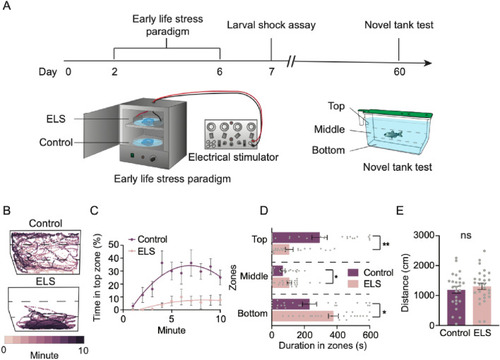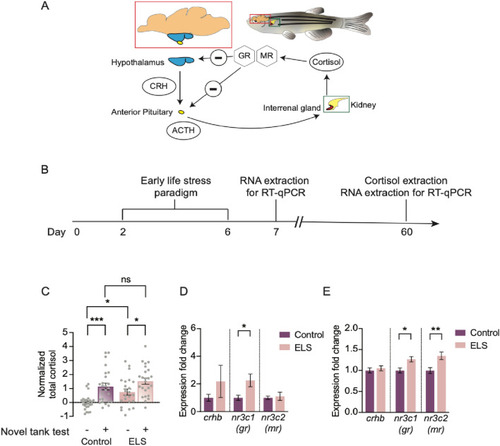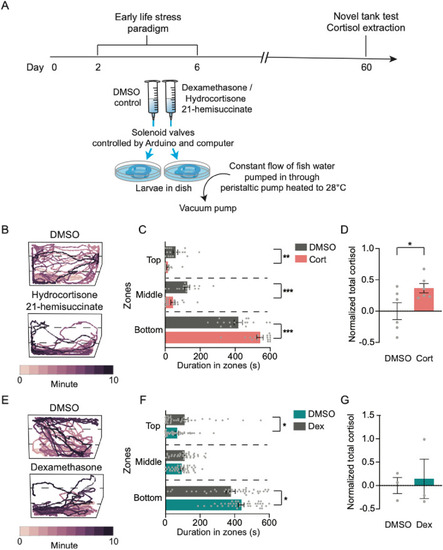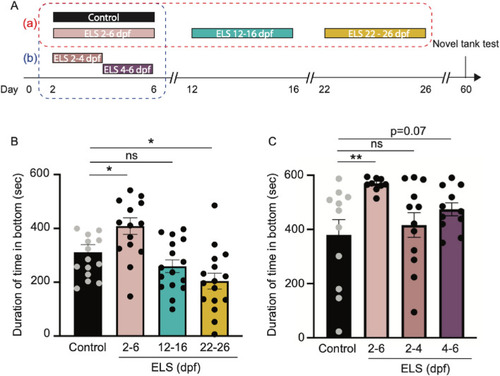- Title
-
Long lasting anxiety following early life stress is dependent on glucocorticoid signaling in zebrafish
- Authors
- Chin, J.S.R., Phan, T.N., Albert, L.T., Keene, A.C., Duboué, E.R.
- Source
- Full text @ Sci. Rep.
|
ELS results in exacerbated stress responses in adulthood. ( |
|
HPI axis is impacted in ELS. ( |
|
Treatment with corticosteroid receptor agonists in early life induces adulthood anxiety. ( |
|
Chronic stress in a time window between 4 and 6 dpf is critical to impact behavior later in life. ( |




